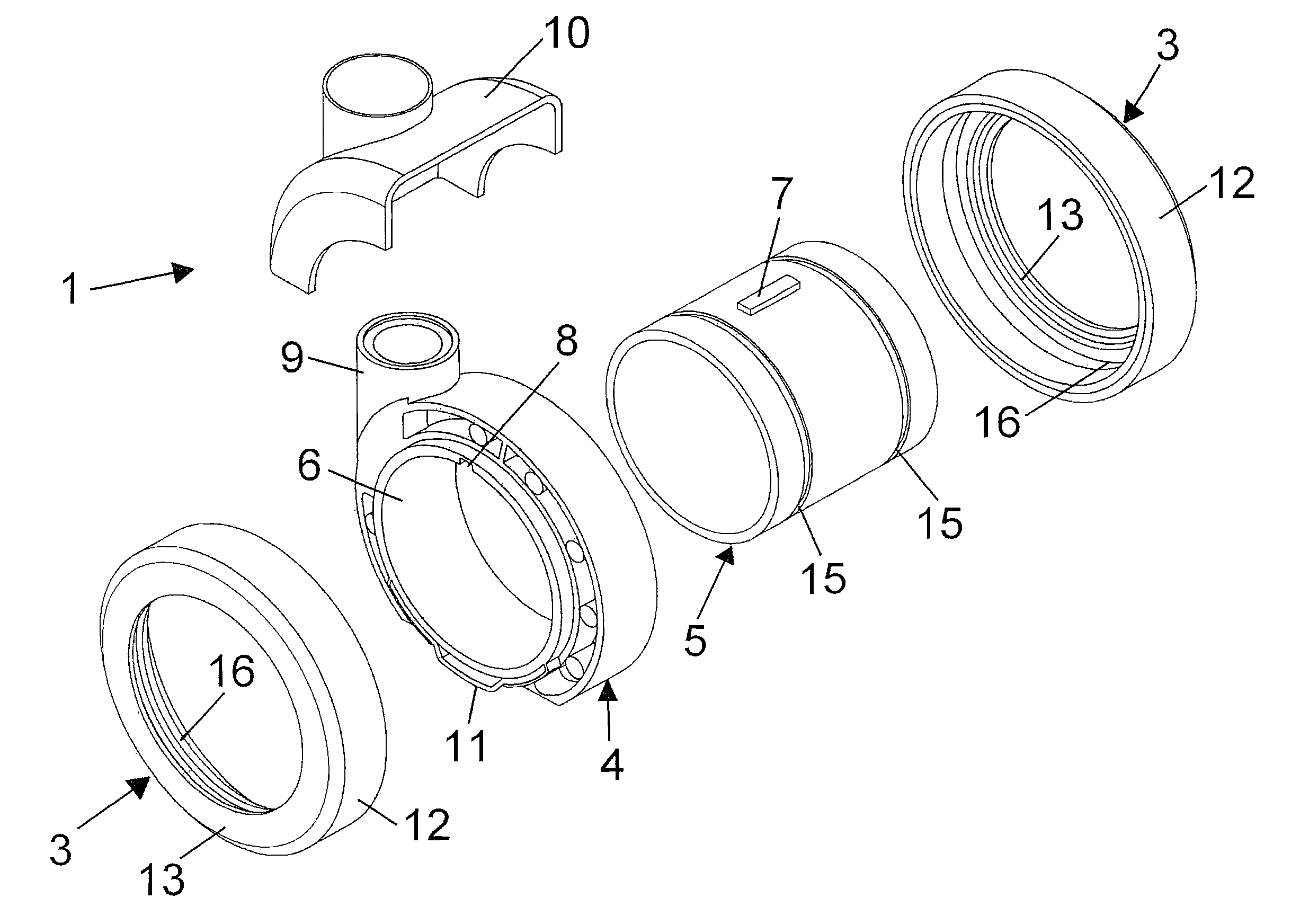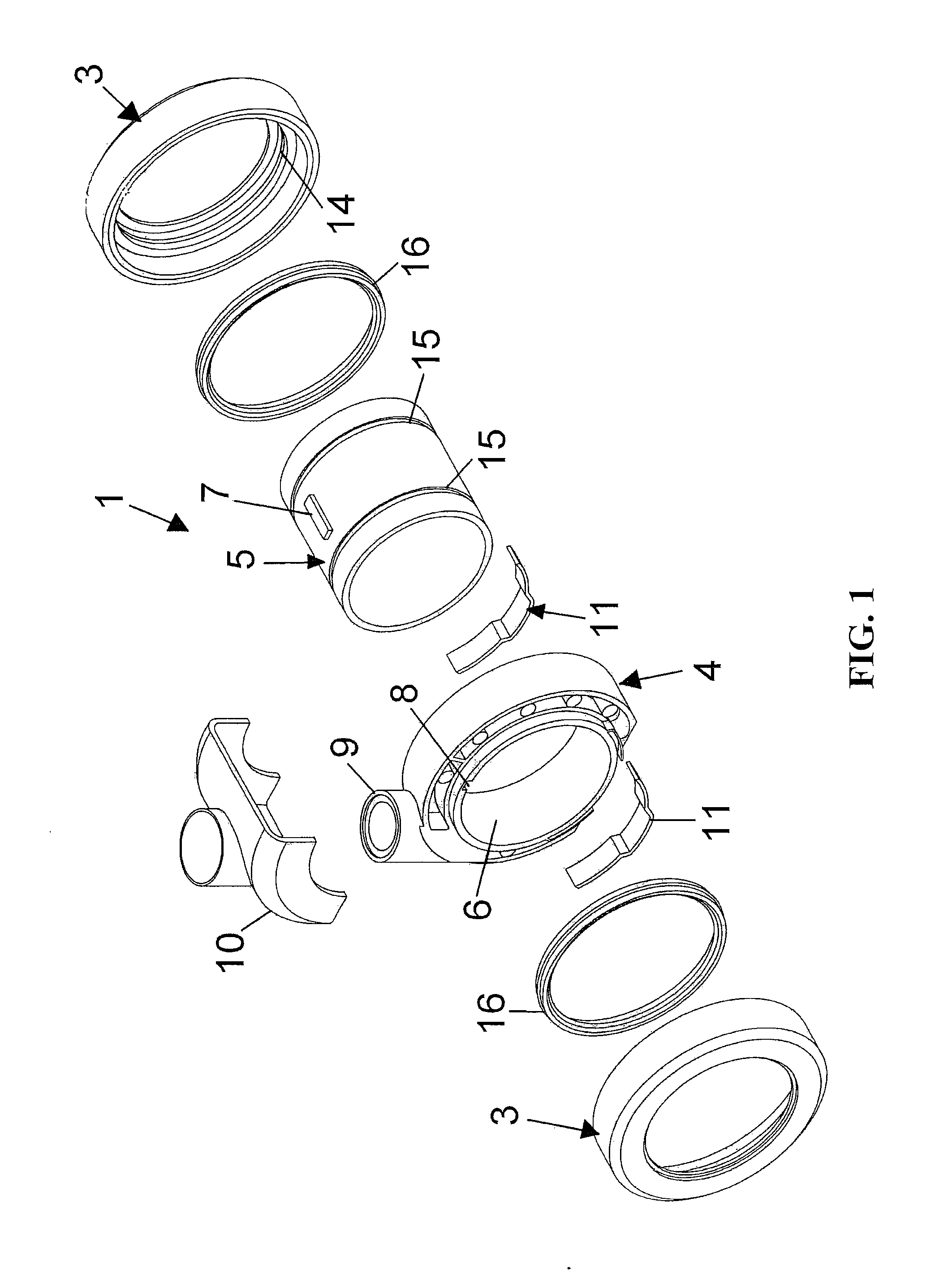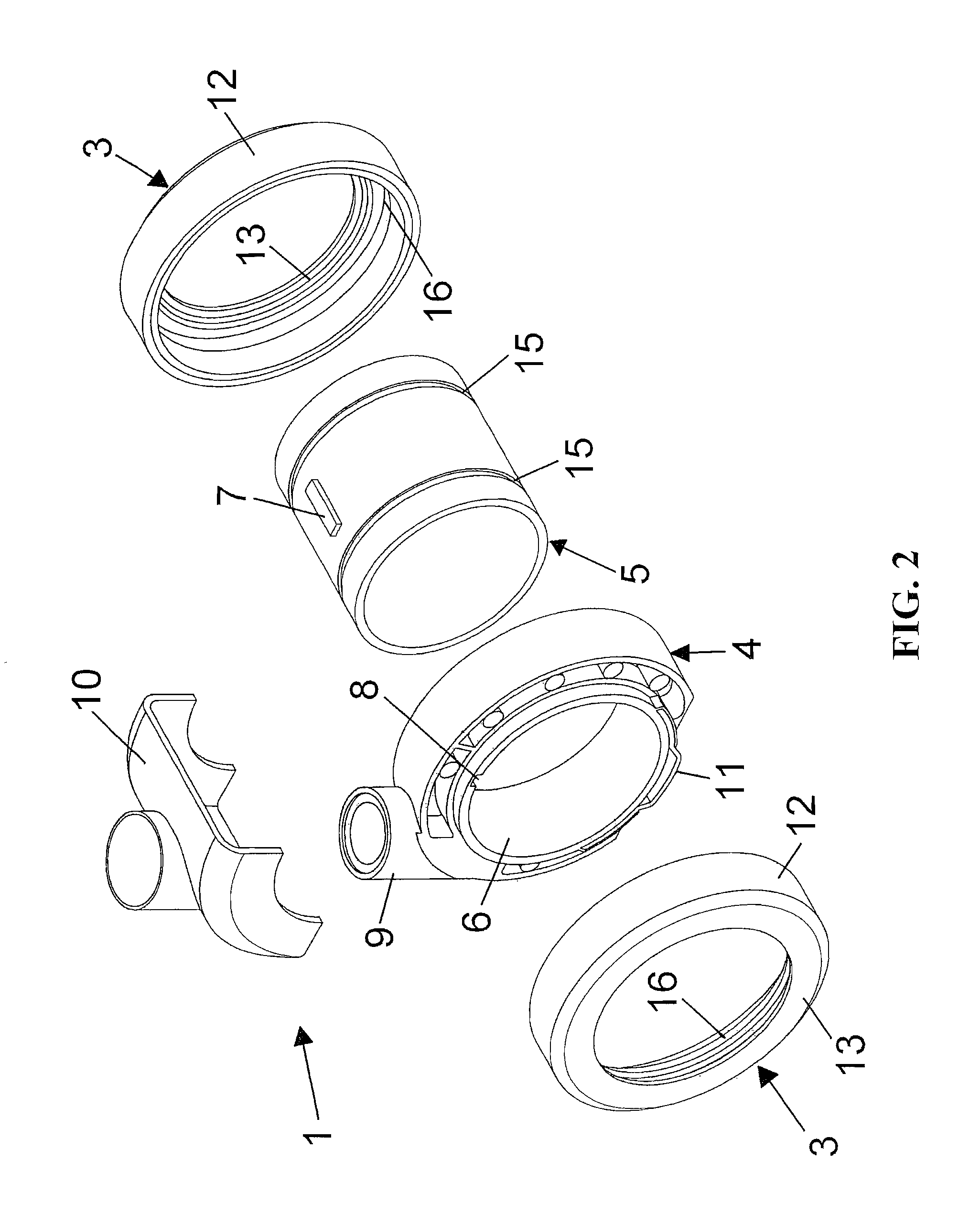Castor wheel construction for furniture pieces and the like
- Summary
- Abstract
- Description
- Claims
- Application Information
AI Technical Summary
Benefits of technology
Problems solved by technology
Method used
Image
Examples
Embodiment Construction
[0046]With reference to the number references of the above mentioned figures, the castor wheel construction according to the present invention, generally indicated by the reference number 1, comprises a castor wheel hub 2 supporting a pair of wheels 3.
[0047]The castor wheel hub 2 comprises an annular support 4 supporting a cylinder 5 having two end portions thereon the two wheels 3 are mounted.
[0048]The annular support 4 comprises moreover a cylindric recess or seat 6 receiving the cylinder 5 which is advantageously provided with a ridge portion 7, which may be fixedly engaged in a longitudinal seat or recess 8 formed on the surface of the cylindric seat for preventing the cylinder 5 from turning with respect to the annular support.
[0049]Said annular support 4 comprises moreover a vertical attachment portion 9, for receiving a peg or other like element, integral with the furniture piece or other component the castor wheel construction must be coupled to.
[0050]The peg, not shown in t...
PUM
 Login to view more
Login to view more Abstract
Description
Claims
Application Information
 Login to view more
Login to view more - R&D Engineer
- R&D Manager
- IP Professional
- Industry Leading Data Capabilities
- Powerful AI technology
- Patent DNA Extraction
Browse by: Latest US Patents, China's latest patents, Technical Efficacy Thesaurus, Application Domain, Technology Topic.
© 2024 PatSnap. All rights reserved.Legal|Privacy policy|Modern Slavery Act Transparency Statement|Sitemap



